Lenovo's Yoga Book 9i is basically a Surface Neo on steroids
The Yoga Book 9i merges the ThinkPad X1 Fold with the Microsoft Surface Neo.
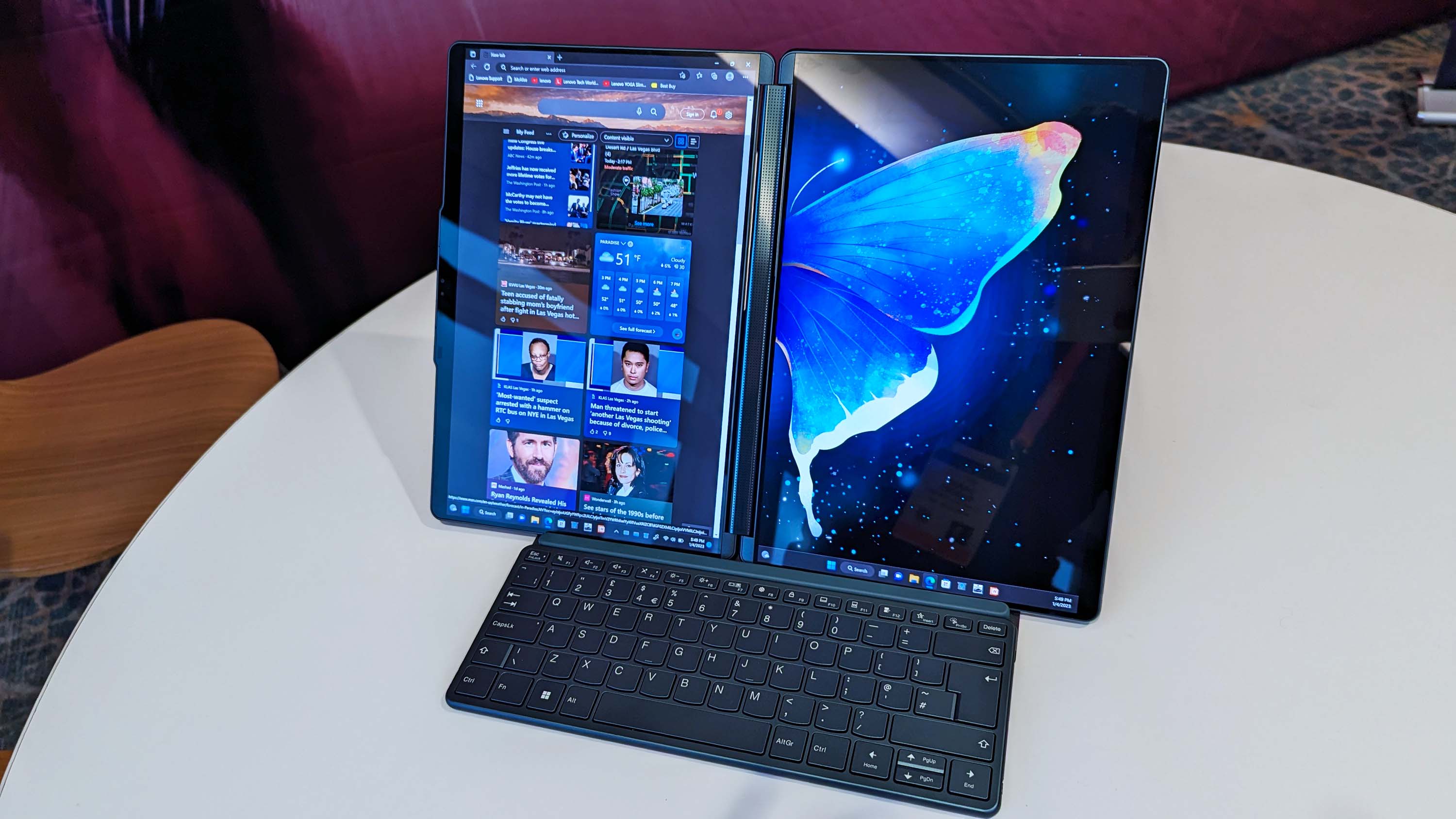
What you need to know
- Lenovo just announced the Yoga Book 9i at CES 2023.
- The unique laptop features two 13.3-inch OLED displays that can be used side-by-side or stacked vertically.
- A Bluetooth keyboard can be used on top of one of the displays to convert the Yoga Book 9i into a traditional laptop or used separately from the screens to make the PC act as a portable desktop.
- The Yoga Book 9i will start at $2,100 and is expected to start shipping in June 2023.
Lenovo announced an entire portfolio of laptops today at CES 2023, arguably none of which are more intriguing than the Yoga Book 9i. The Lenovo Yoga Book 9i features two OLED screens that can be used side-by-side or stacked vertically. The form factor is somewhat akin to the never-released Microsoft Surface Neo, but Lenovo's PC is noticeably bigger, featuring a pair of 13.3-inch screens compared to the Neo's 9-inch displays.
The foldable laptop runs on a 13th Gen Intel Core CPU and Intel Iris Xe graphics. Both of its displays have a resolution of 2.8K and reach 400 nits of brightness. Those screens have a 16:10 aspect ratio. The Yoga Book 9i is expected to ship in June 2023 with a starting price of $2,100.
The Yoga Book 9i does not feature a folding display, but it clearly takes design cues from the Lenovo ThinkPad X1 Fold. The Yoga Book 9i works with a Bluetooth keyboard that can be attached to one display to convert the PC into a traditional laptop. The entire foldable can also be stacked vertically, making a pair of monitors in a setup similar to a portable desktop with a second monitor.
Of course, the Yoga Book 9i has two displays rather than one large folding one, which has its pros and cons. While the design is likely more durable than one featuring a foldable display, the Yoga Book 9i cannot be used to form a continuous large screen.
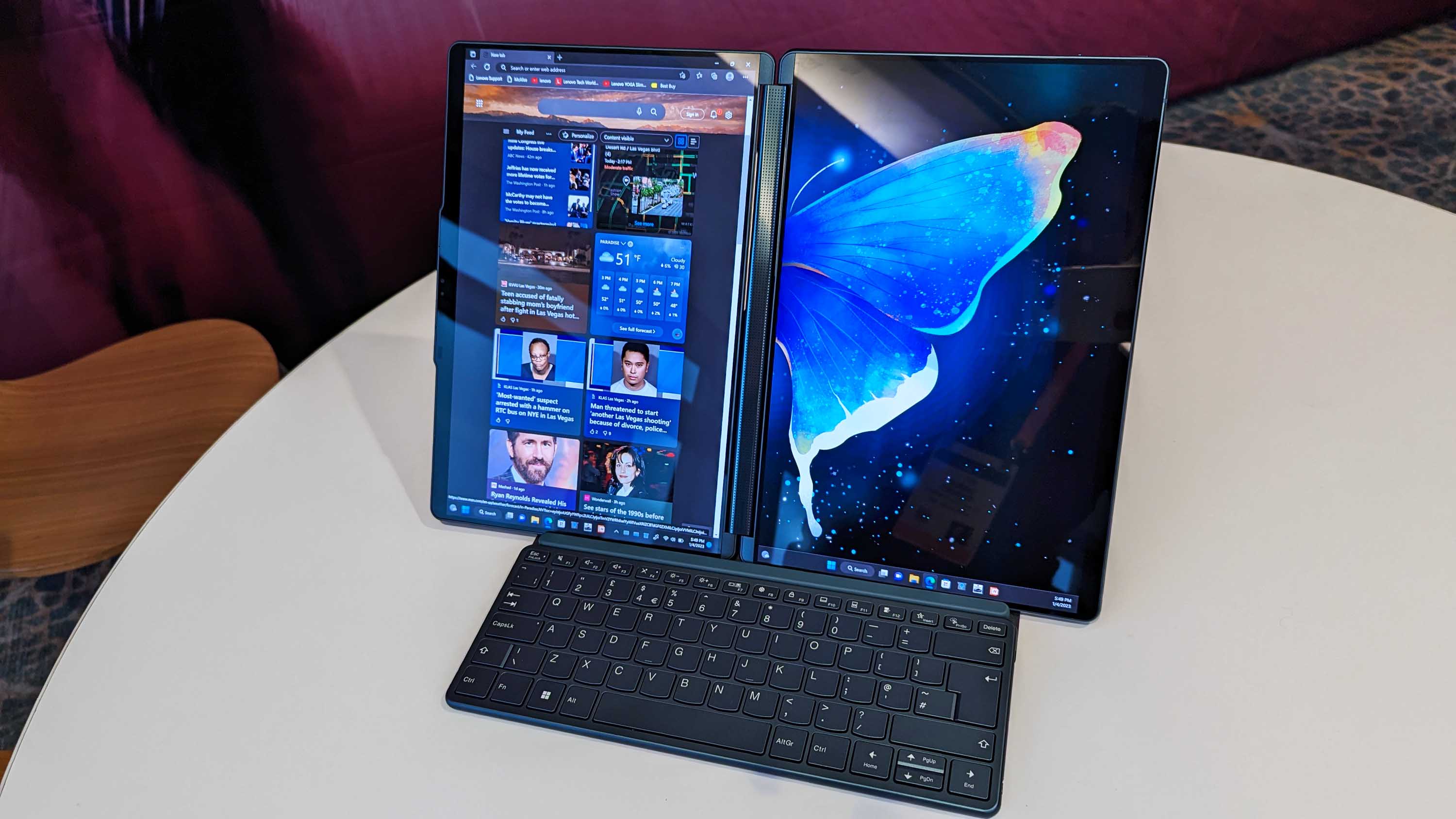
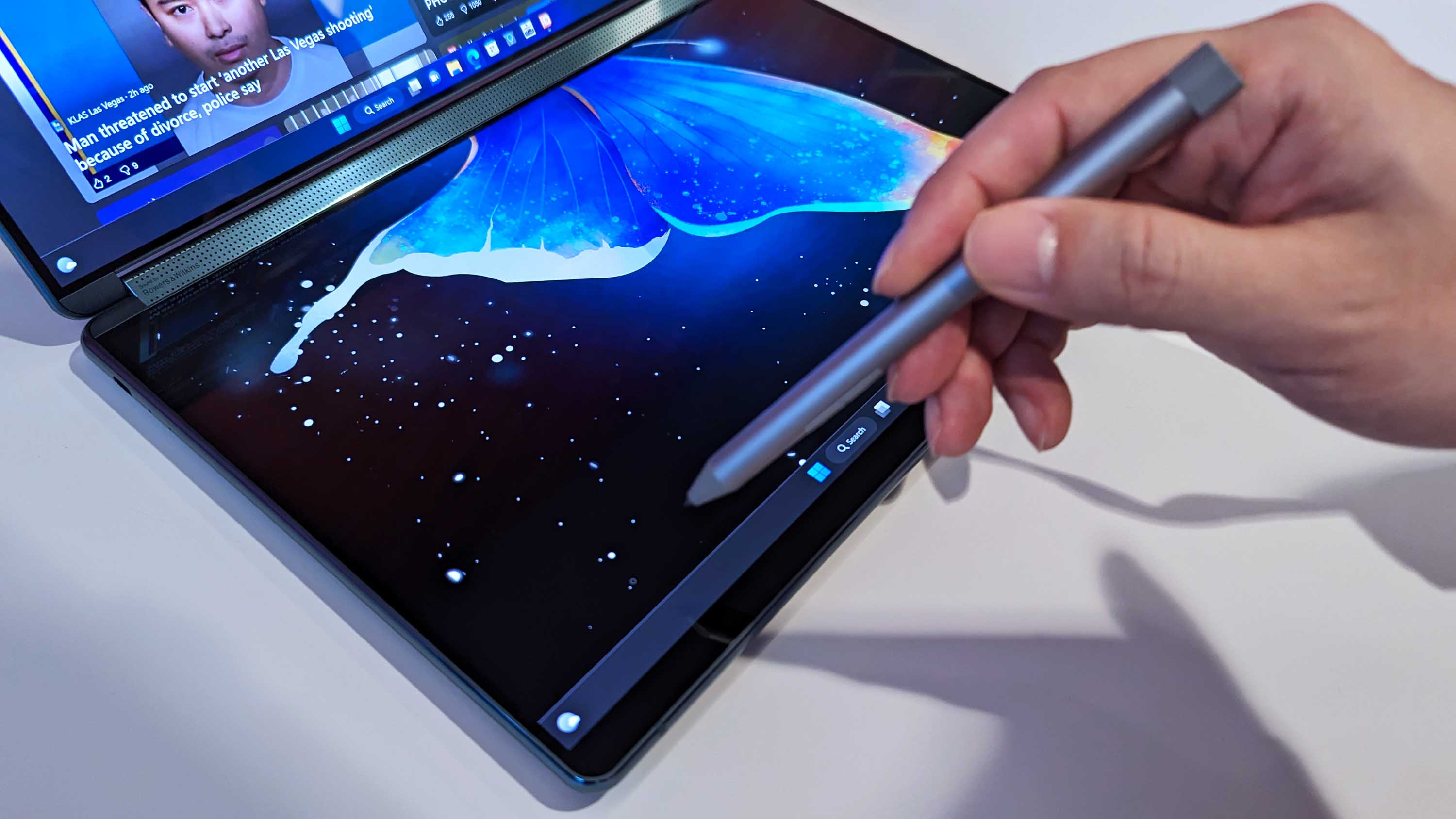
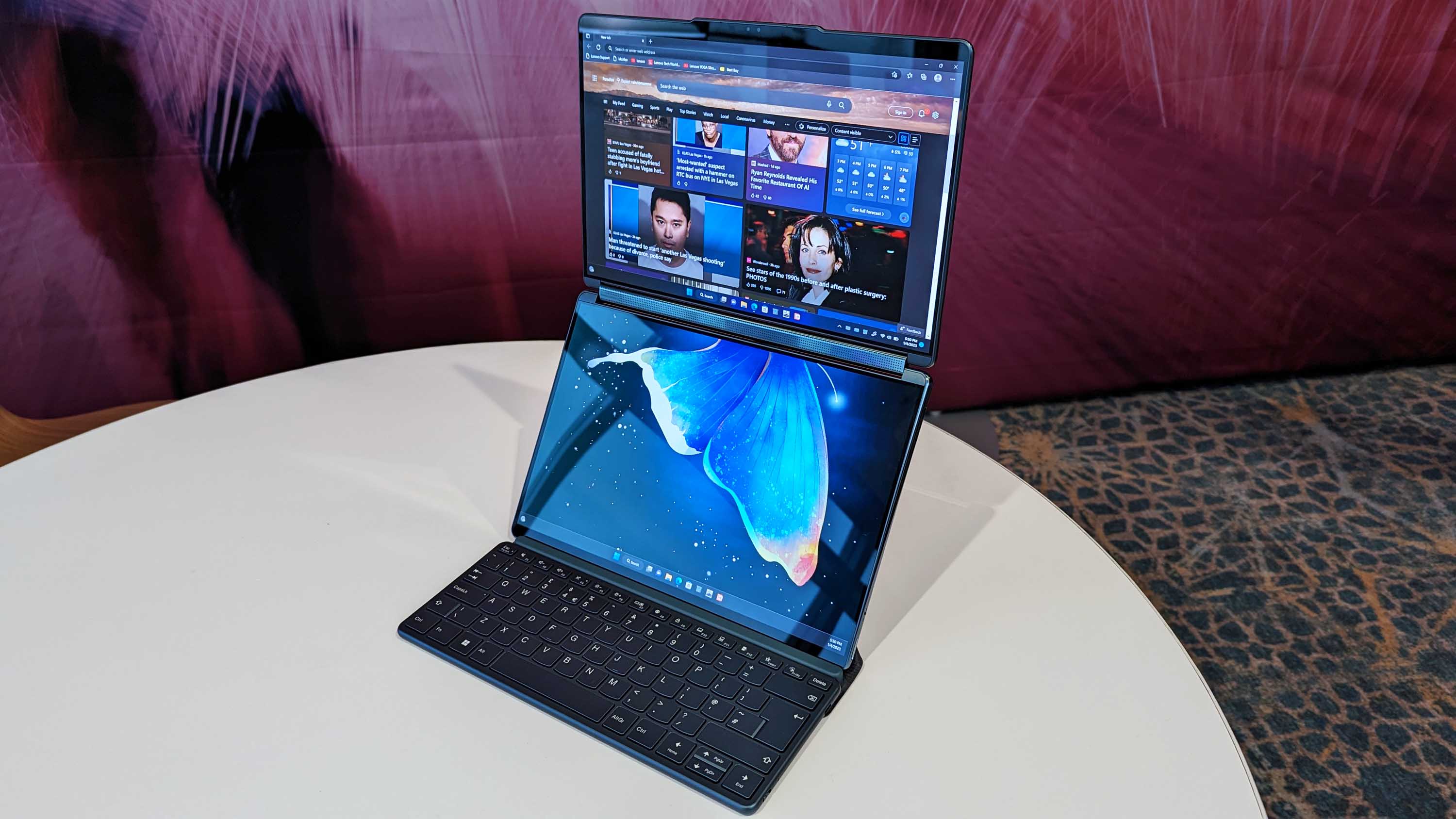

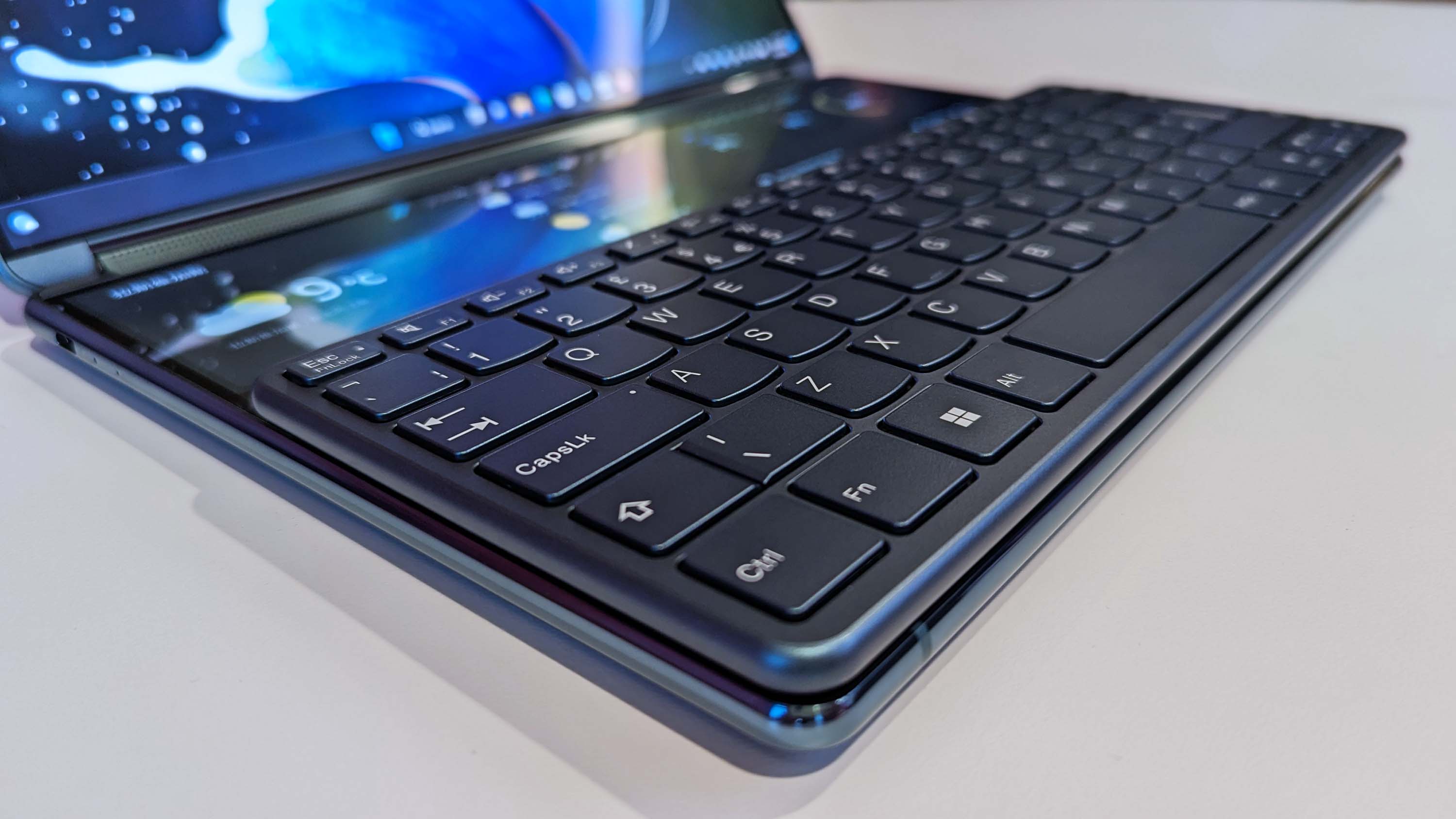
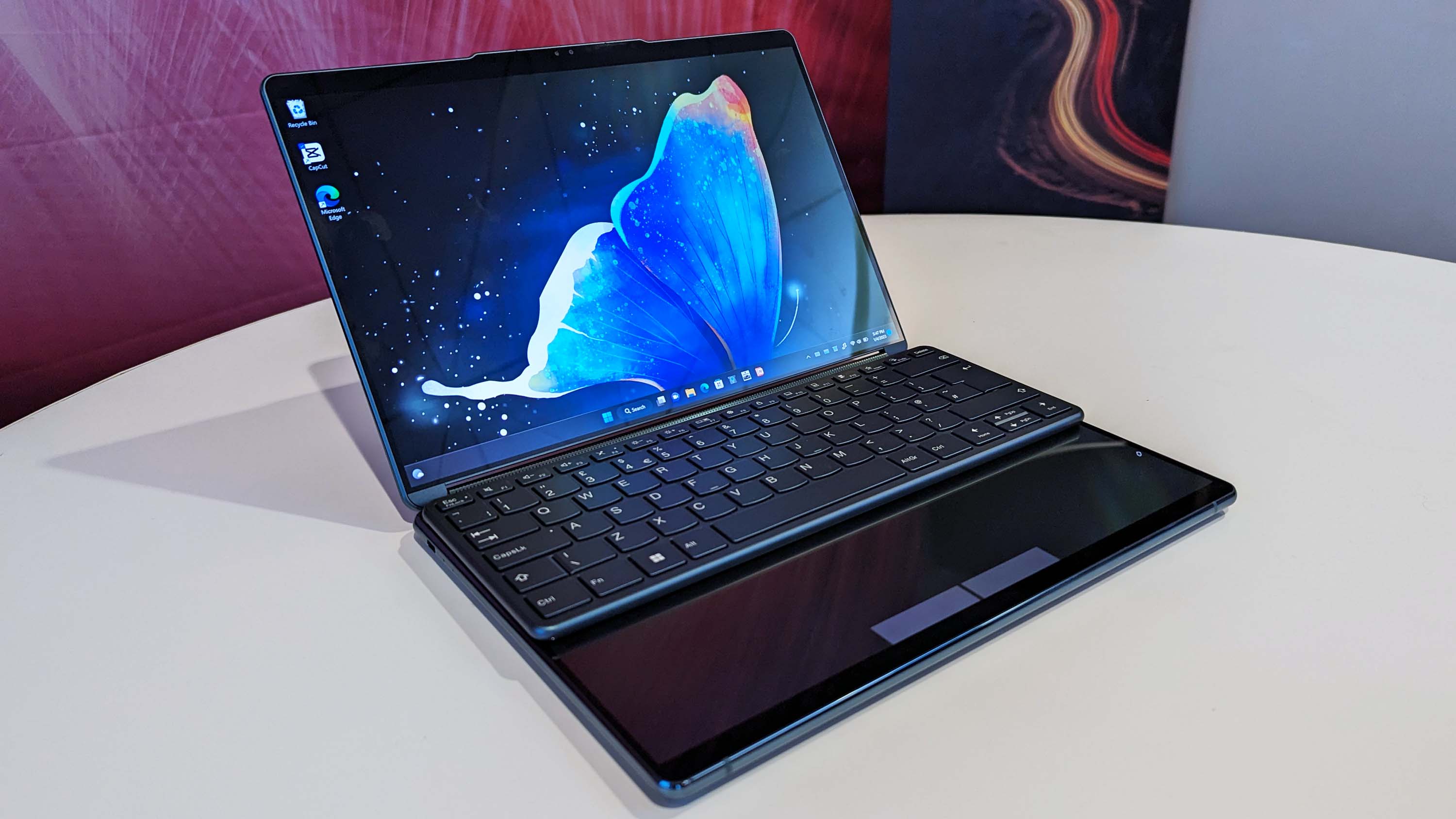
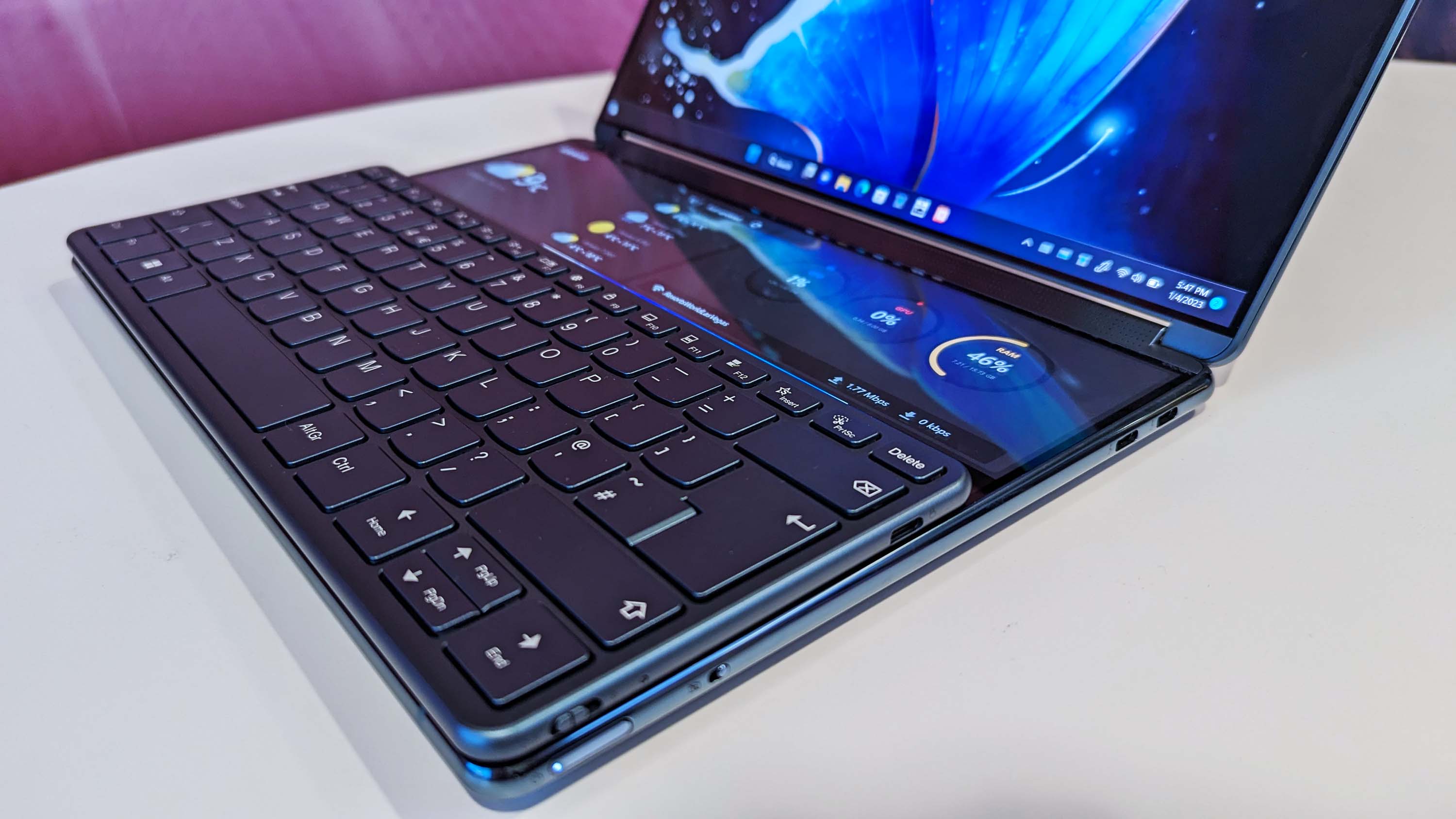
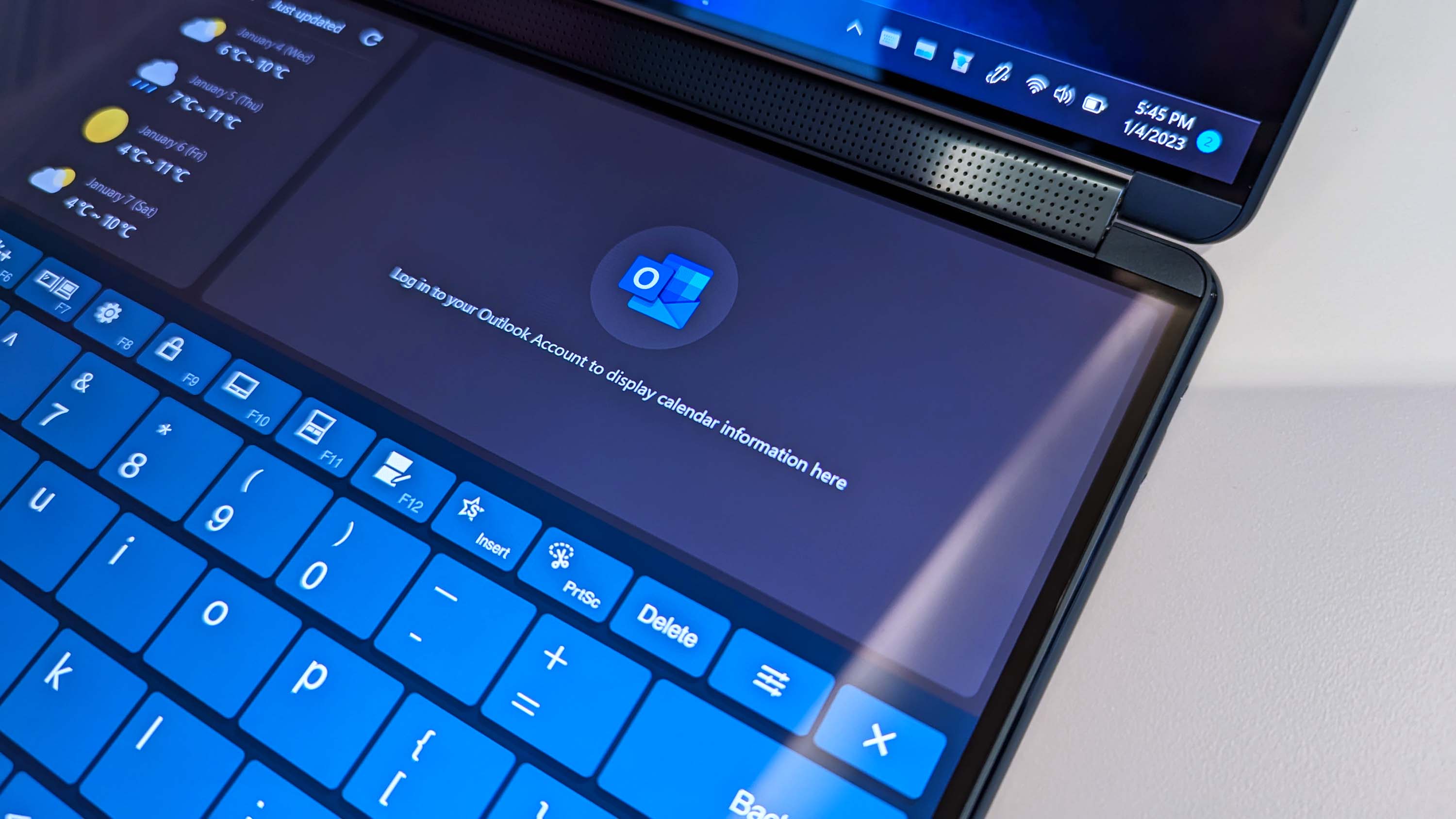
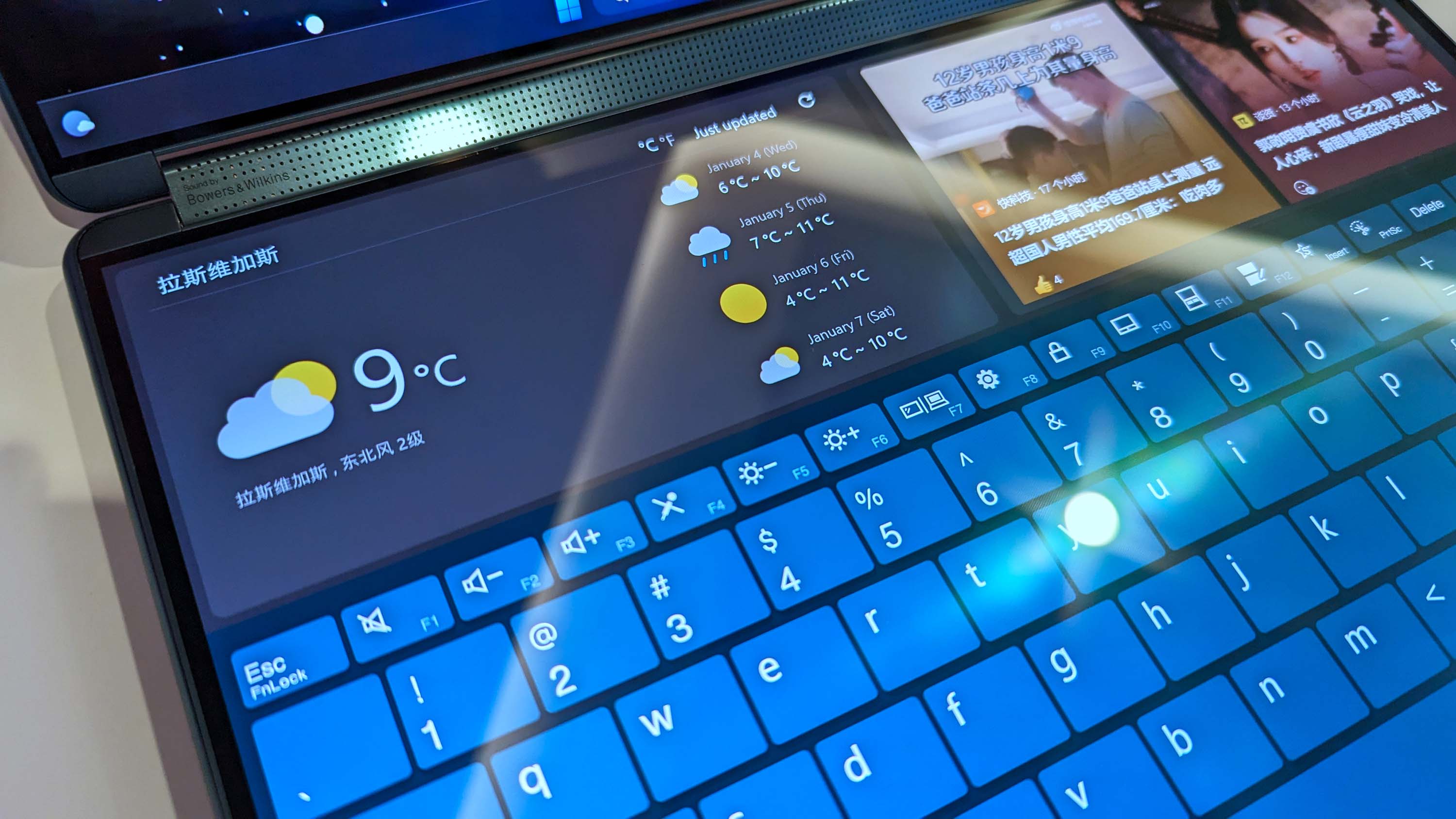
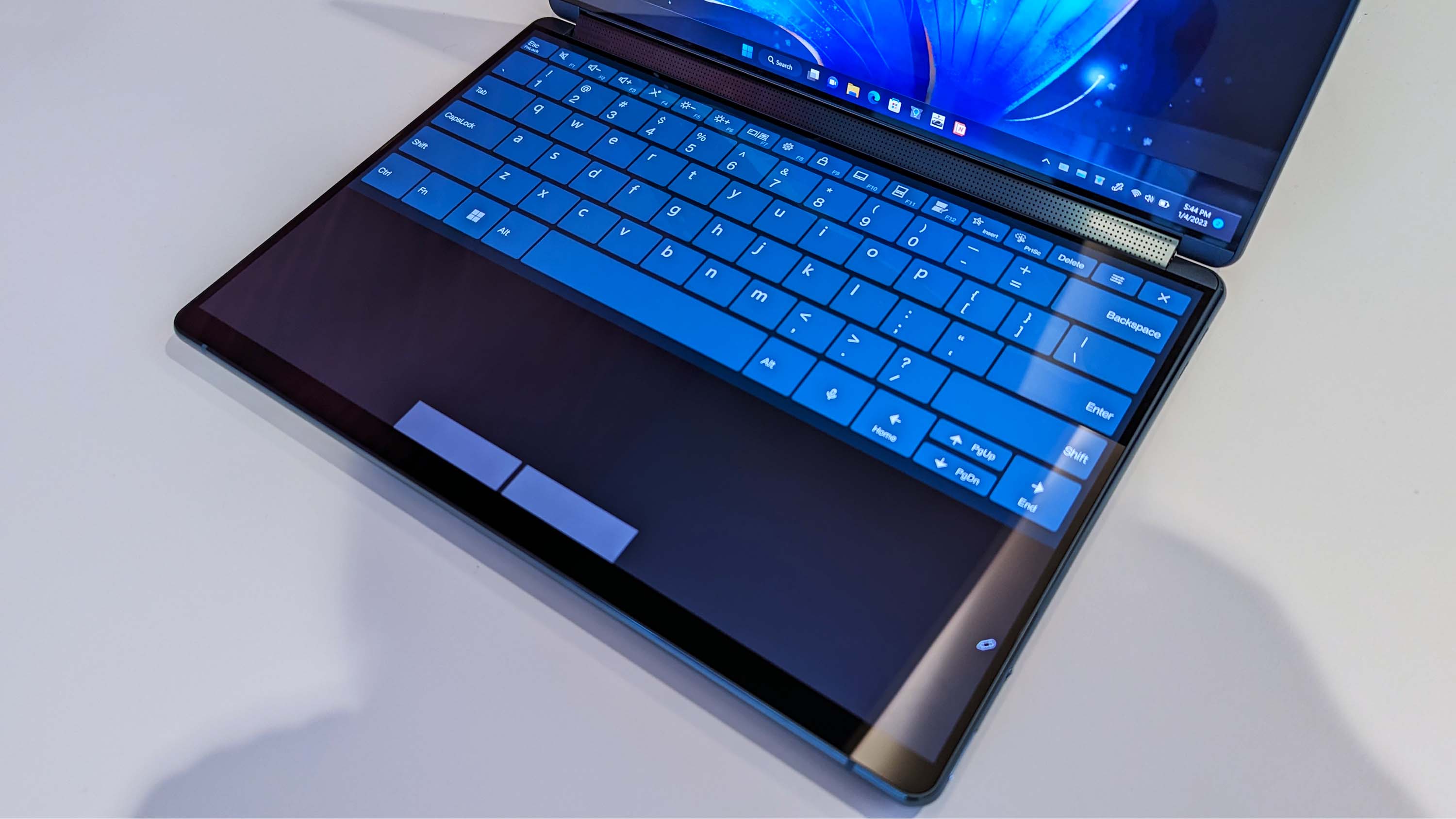
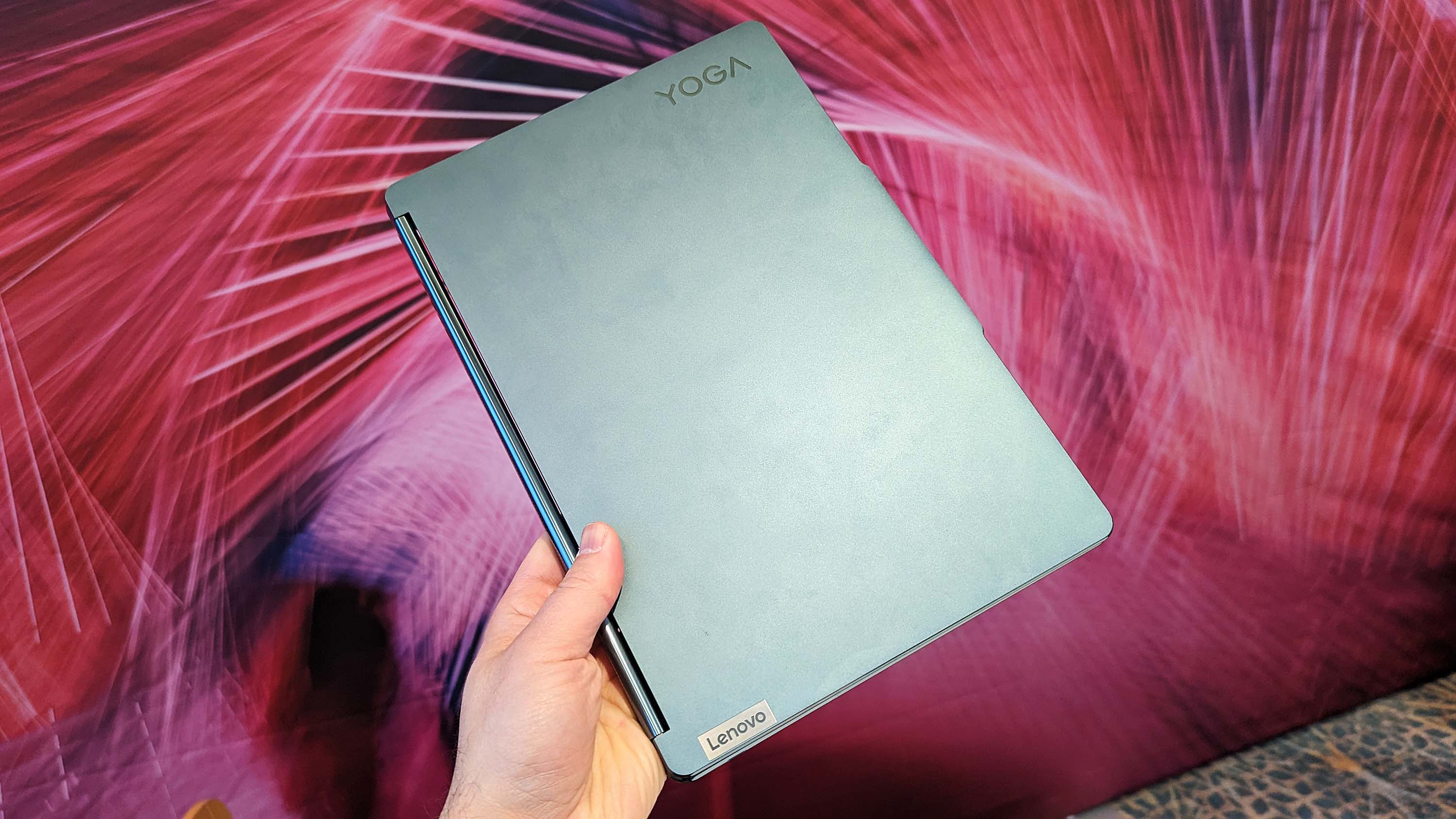
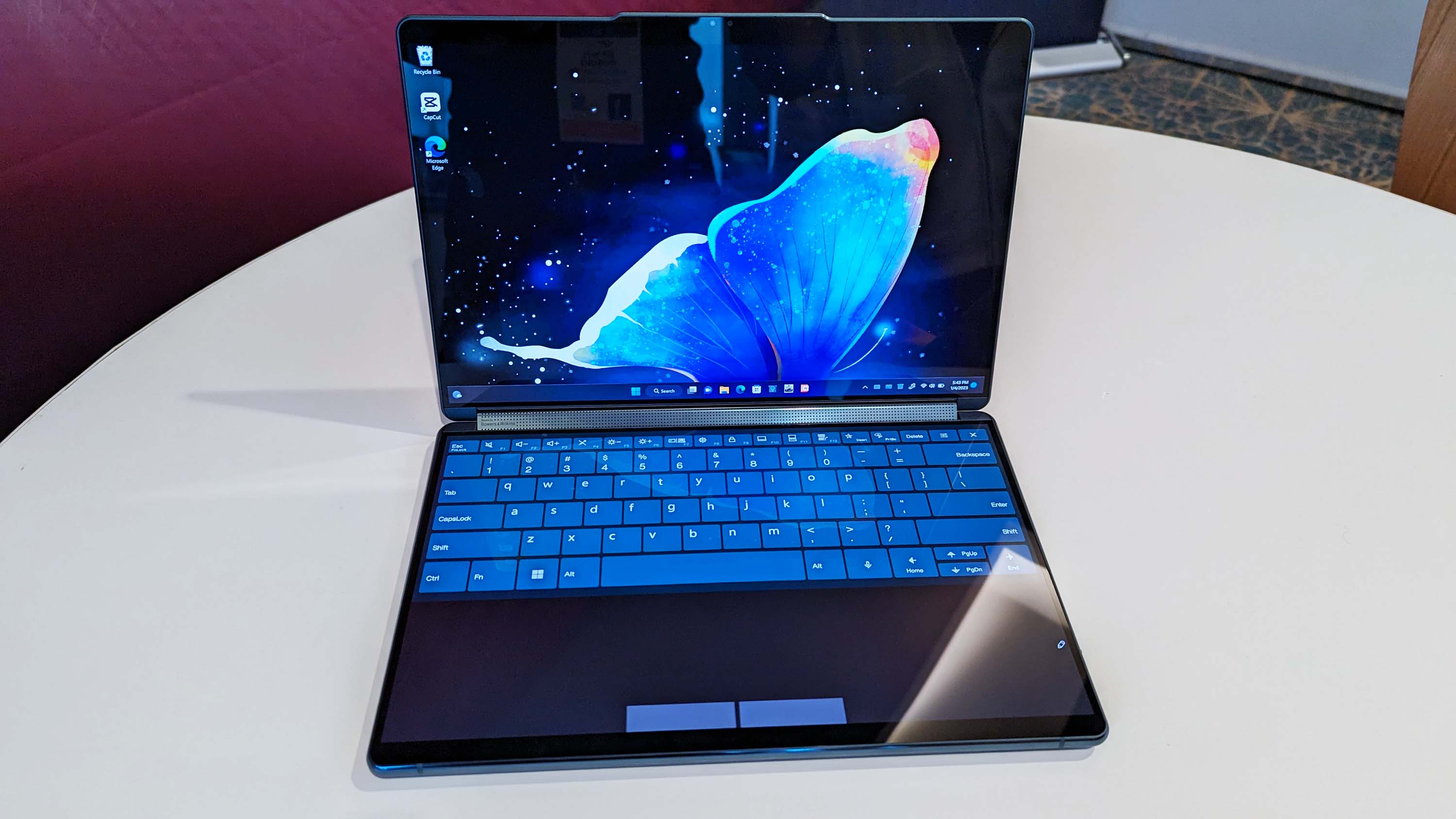
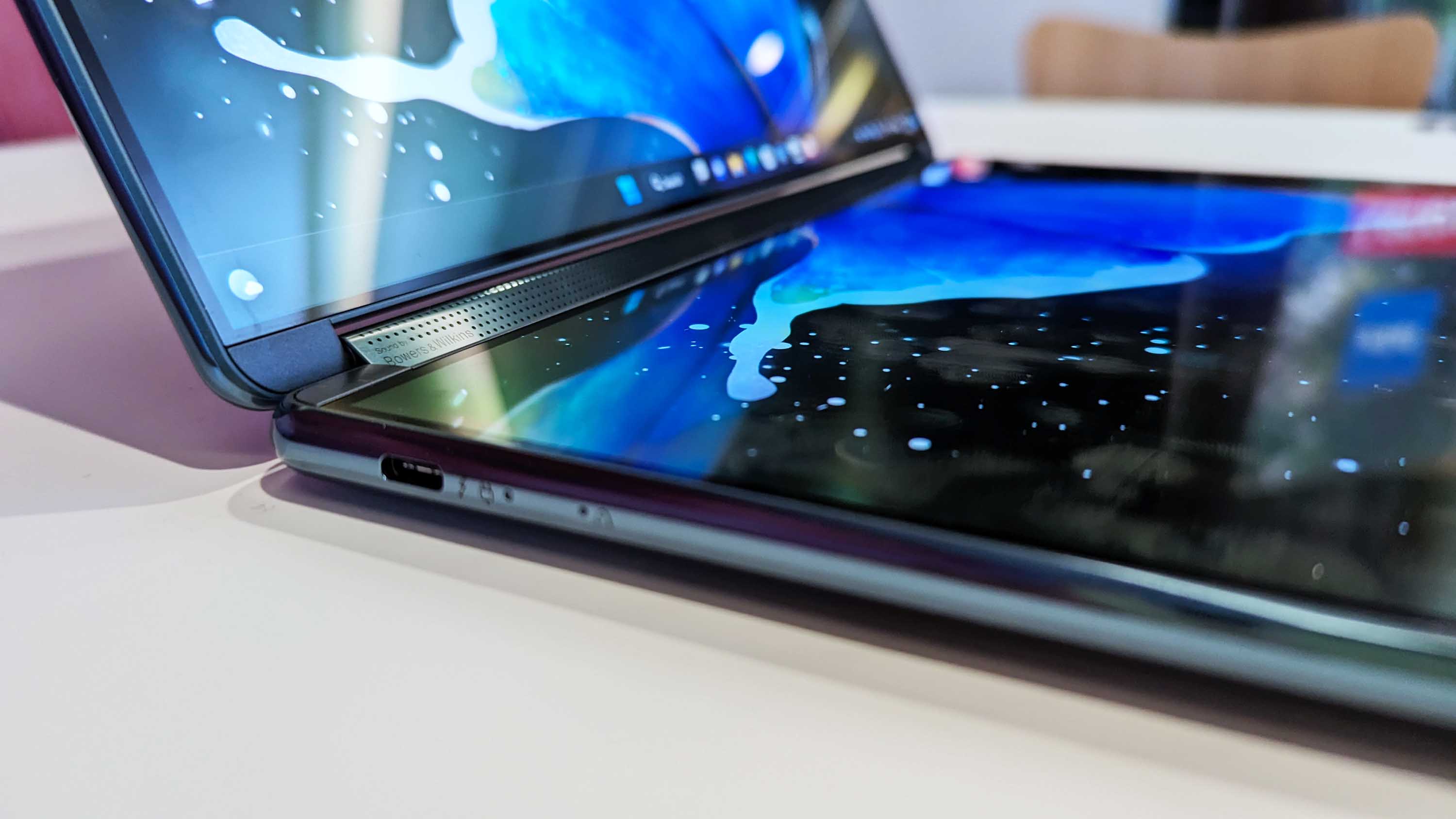
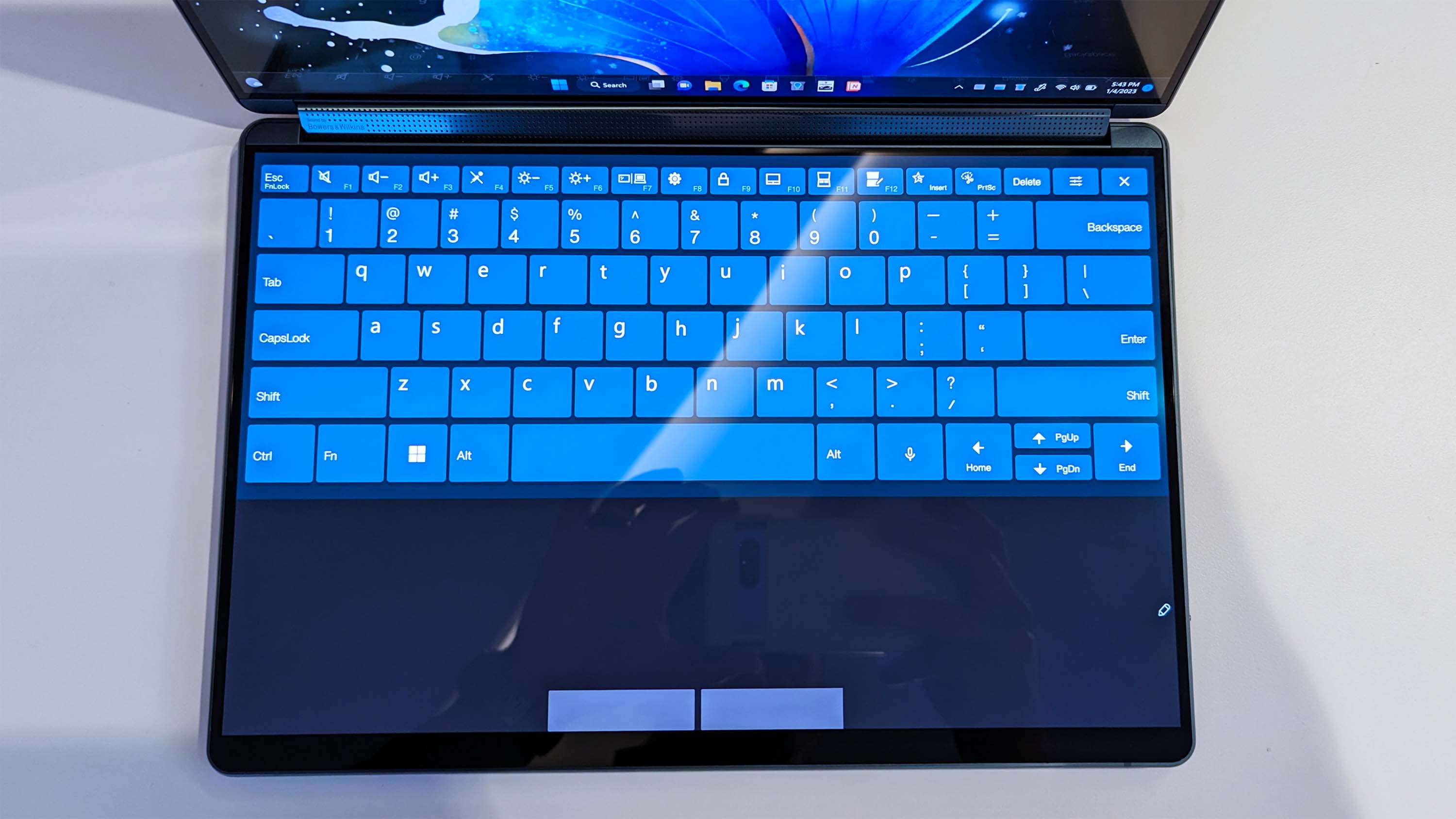
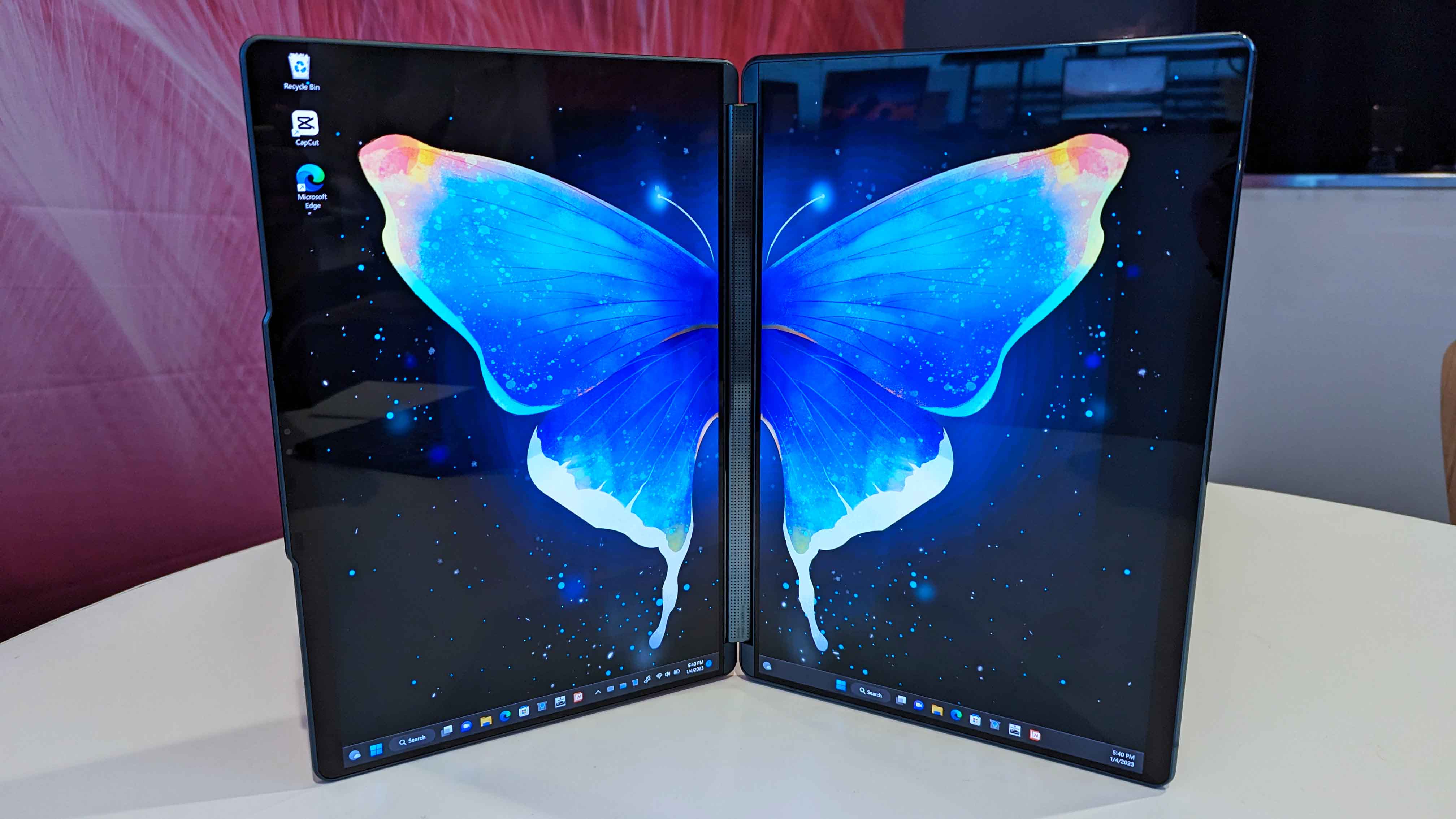
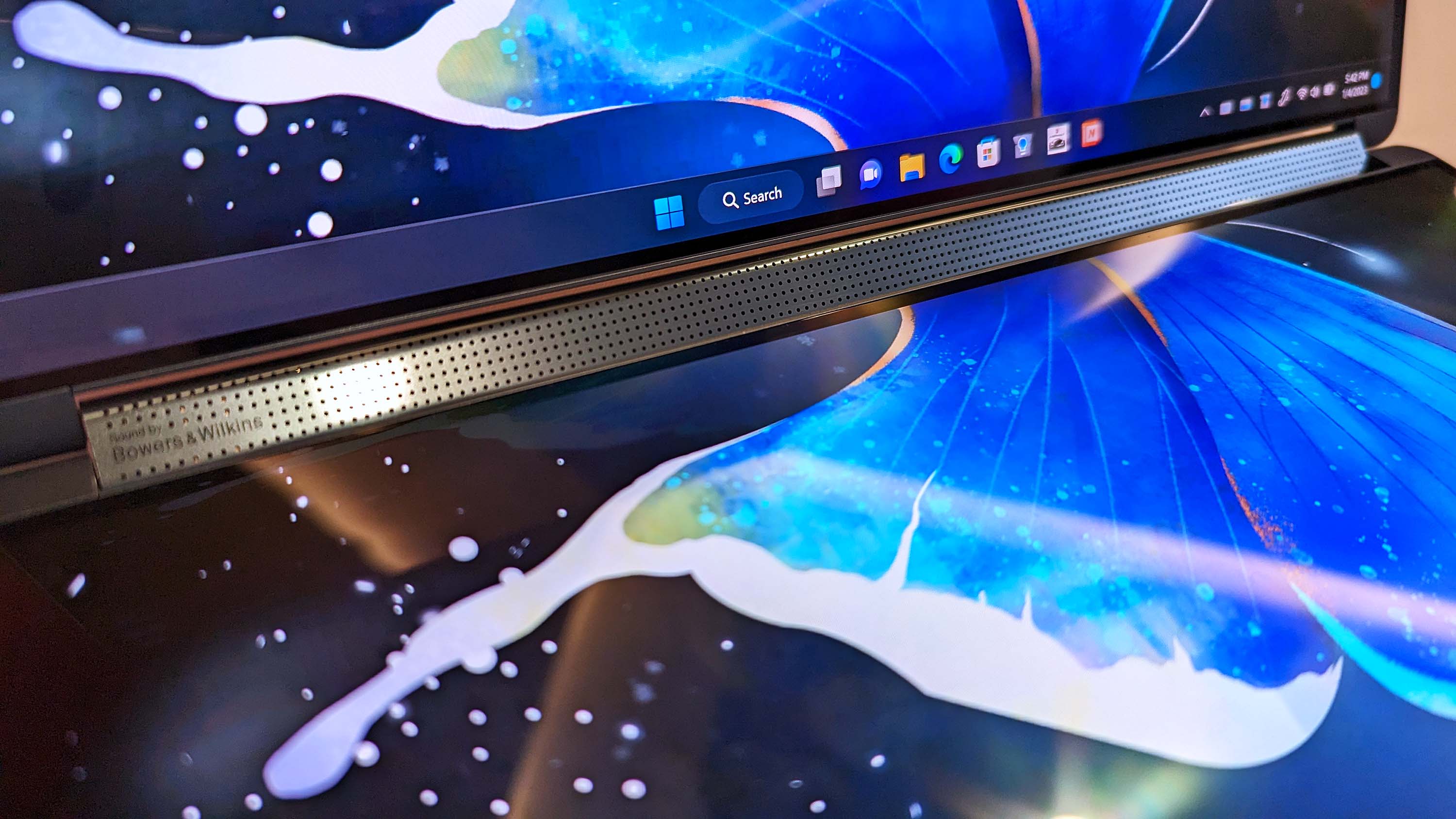
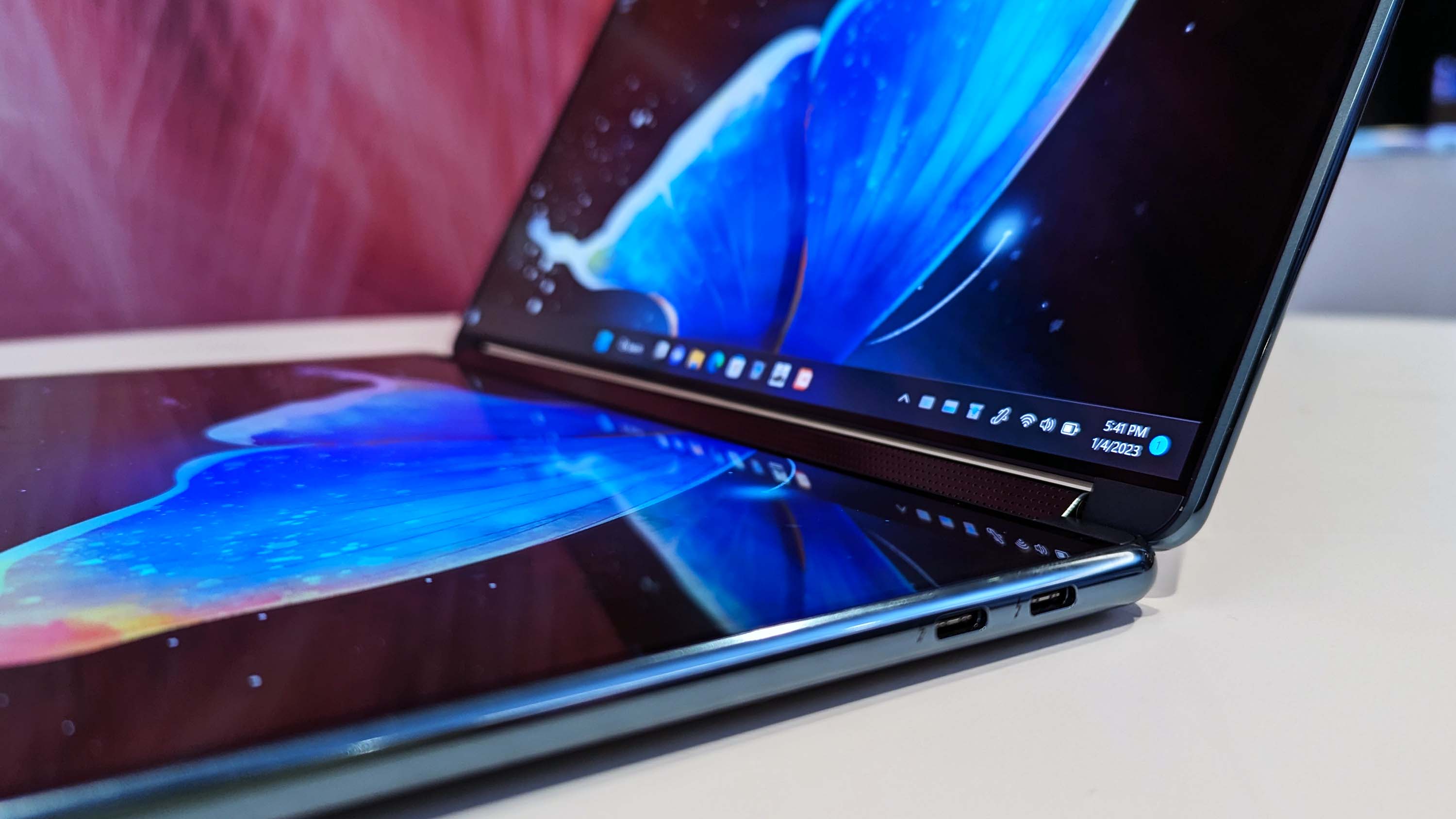
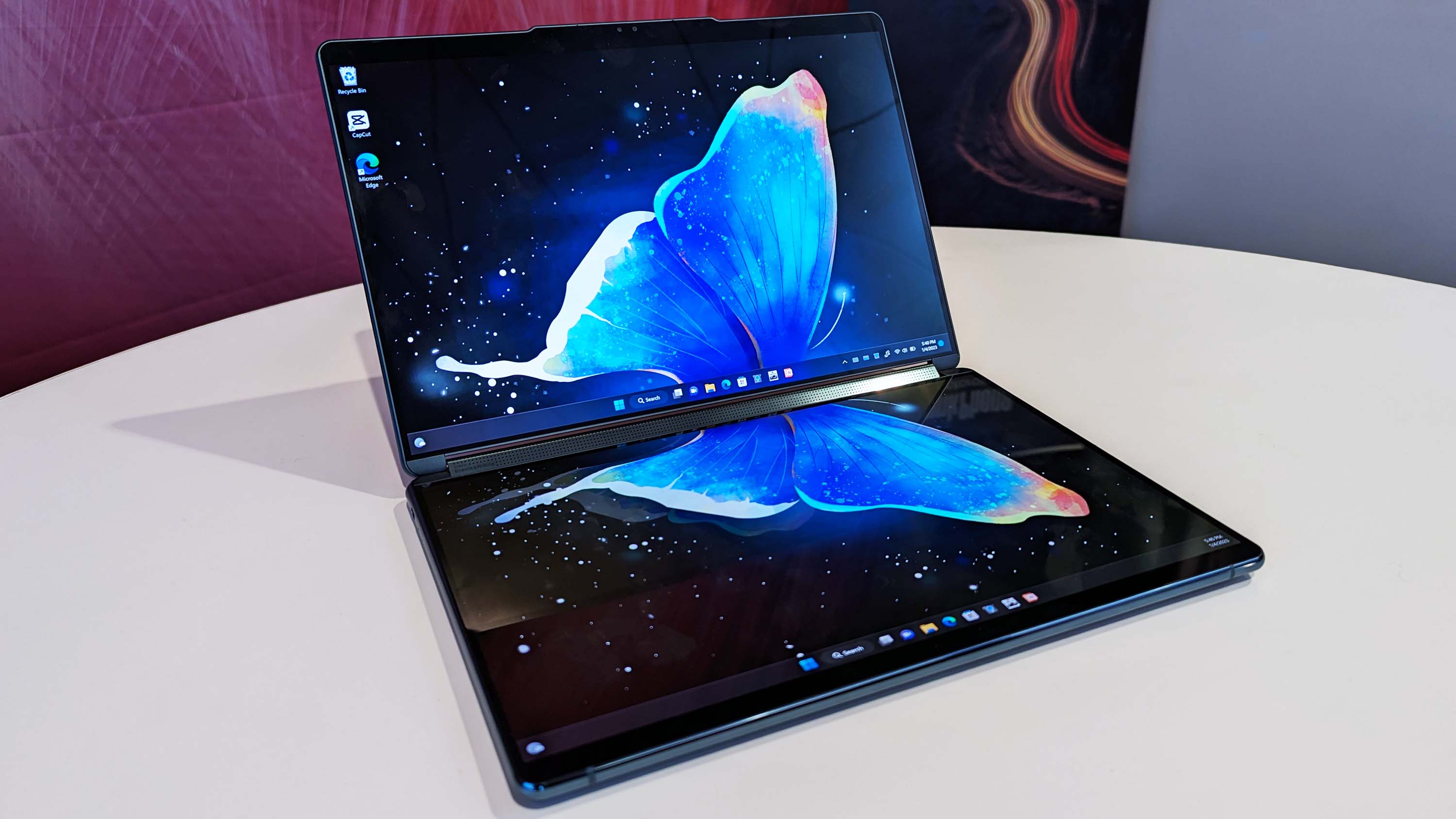
| Category | Spec |
|---|---|
| OS | Windows 11 Home |
| Row 1 - Cell 0 | Windows 11 Pro |
| CPU | 13th Gen Intel Core i7-U15 |
| Graphics | Intel Iris Xe |
| Displays | 13.3-inch, 2.8K, OLED, 16:10 |
| Row 5 - Cell 0 | 400 nits |
| Row 6 - Cell 0 | 100% DCI-P3 |
| Row 7 - Cell 0 | 60Hz |
| Row 8 - Cell 0 | HDR |
| Row 9 - Cell 0 | Puresight |
| Row 10 - Cell 0 | Dolby Vision |
| RAM | 16 GB LPDDR5X |
| Storage | Up to 1 TB PCIe SSD Gen4 |
| Audio | 2x 2W, 2x 1W, Bowers & Wilkins speakers |
| Row 14 - Cell 0 | Dolby Atmos |
| Camera | 5MP FHD IR+RGB |
| Battery | 80Whr |
| Connectivity | Wi-Fi 6E, Bluetooth 5.2 |
| Dimensions | 11.78 x 8.03 x 0.63 in (299.1 x 203.9 x 15.95 mm) |
| Weight | 3.04 lbs (1.38 kg) |
The Yoga Book 9i supports a variety of postures, including acting as a clamshell laptop, resting in tent mode, and having one display over the other by utilizing a folio stand (included with the laptop). Lenovo emphasized the multitasking capabilities created by these postures, such as having a video call on one display while showing the slides of a presentation on the other.
Support for a Smart Pen allows users to ink or navigate with a stylus on either of the Yoga Book 9i's screens.
The hinge of the Yoga Book 9i houses a sound bar that rotates 360 degrees, allowing sound to fire toward a user regardless of the posture the laptop is in.
Get the Windows Central Newsletter
All the latest news, reviews, and guides for Windows and Xbox diehards.
Windows Central take: Returning to the new
Lenovo has a long track record of releasing innovative products. The ThinkPad X1 Fold line experimented with folding displays and new form factors for PCs. E-ink displays and other unique features have also made their way to various Lenovo products over the years. The ThinkBook Yoga 9i builds off of Lenovo's previous innovation, all while delivering a form factor that Windows fans have clamored for.
The Lenovo Yoga Book 9i looks like someone merged the ThinkPad X1 Fold and the never-released Microsoft Surface Neo. The end result is stunning. Lenovo clearly took lessons that it learned from refining the ThinkPad X1 Fold over multiple generations when creating the Yoga Book 9i. The keyboard, various postures, and overall design of the Yoga Book 9i will all be familiar to anyone that's handled or viewed Lenovo's single-screen foldable.
Some will ask why a device like this is necessary. After all, foldable screens are a thing and Lenovo already has a PC that has one. This is a debate that Surface fans are all-too familiar with. According to research done by Microsoft, and my own personal experience, brains handle two screens differently than one. I multitask better on a dual-monitor setup than when using an ultrawide display, even if the overall screen sizes are the same. That appears to be a focus of Lenovo's with the Yoga Book 9i as well.
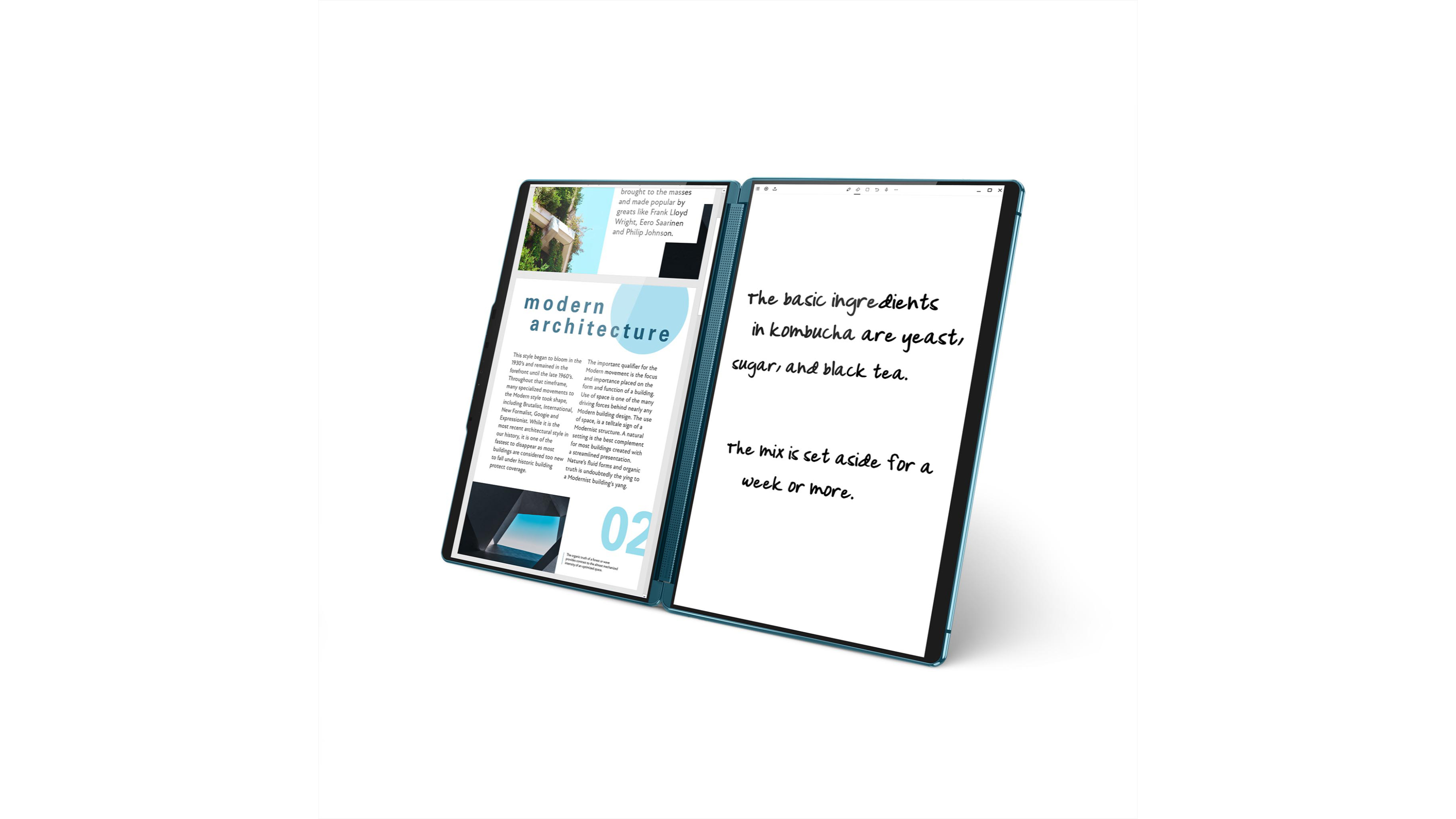
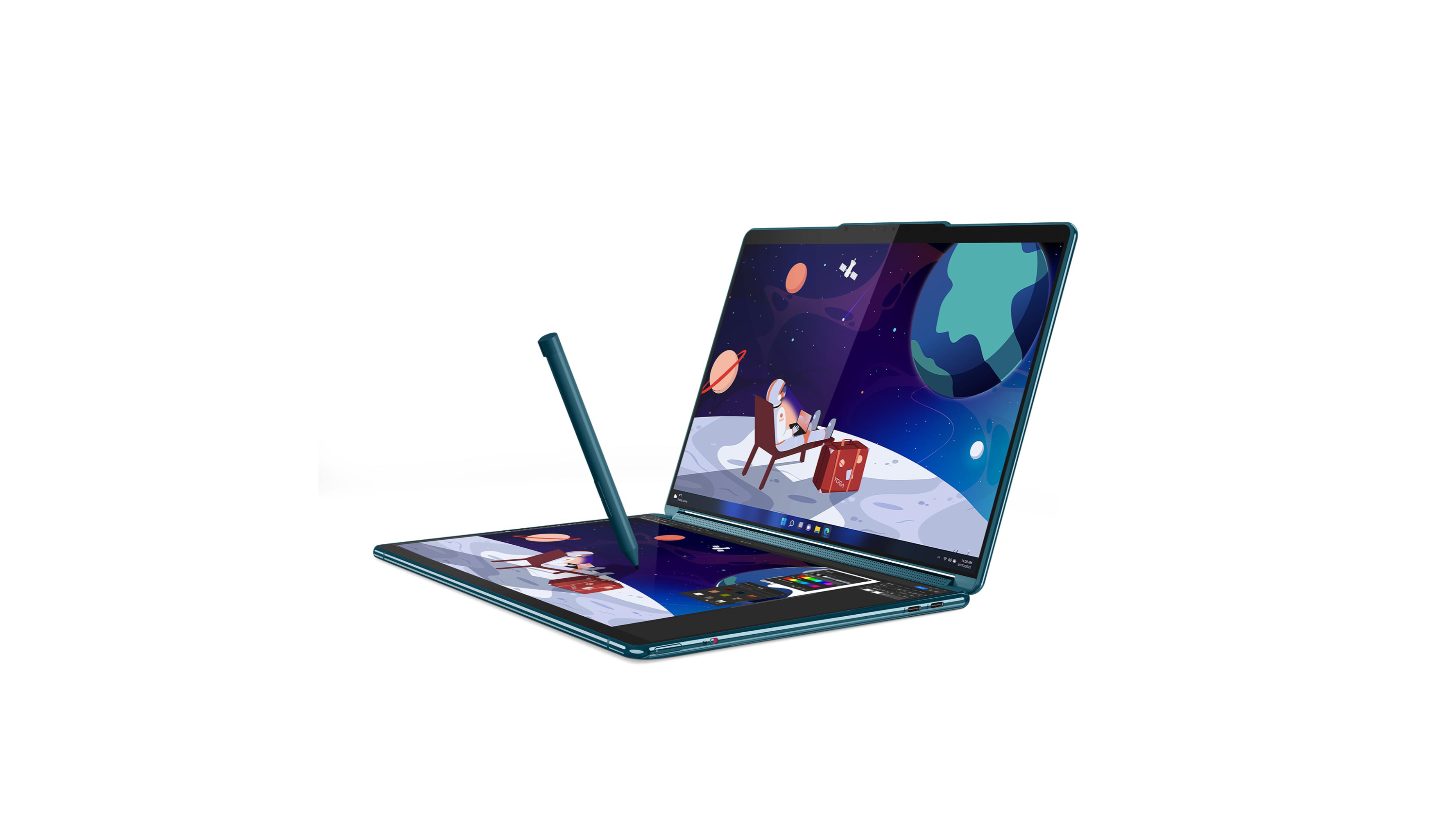
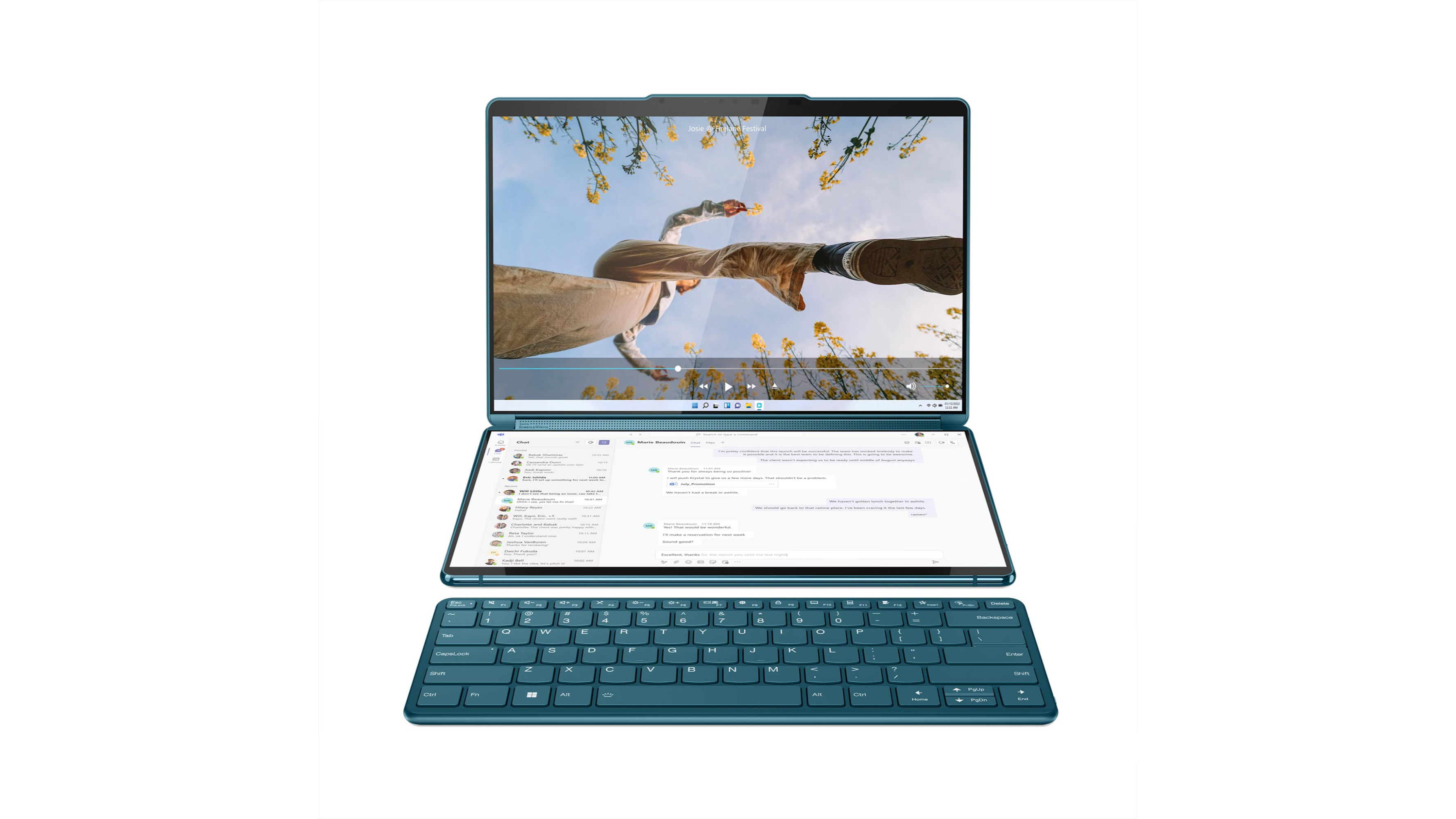
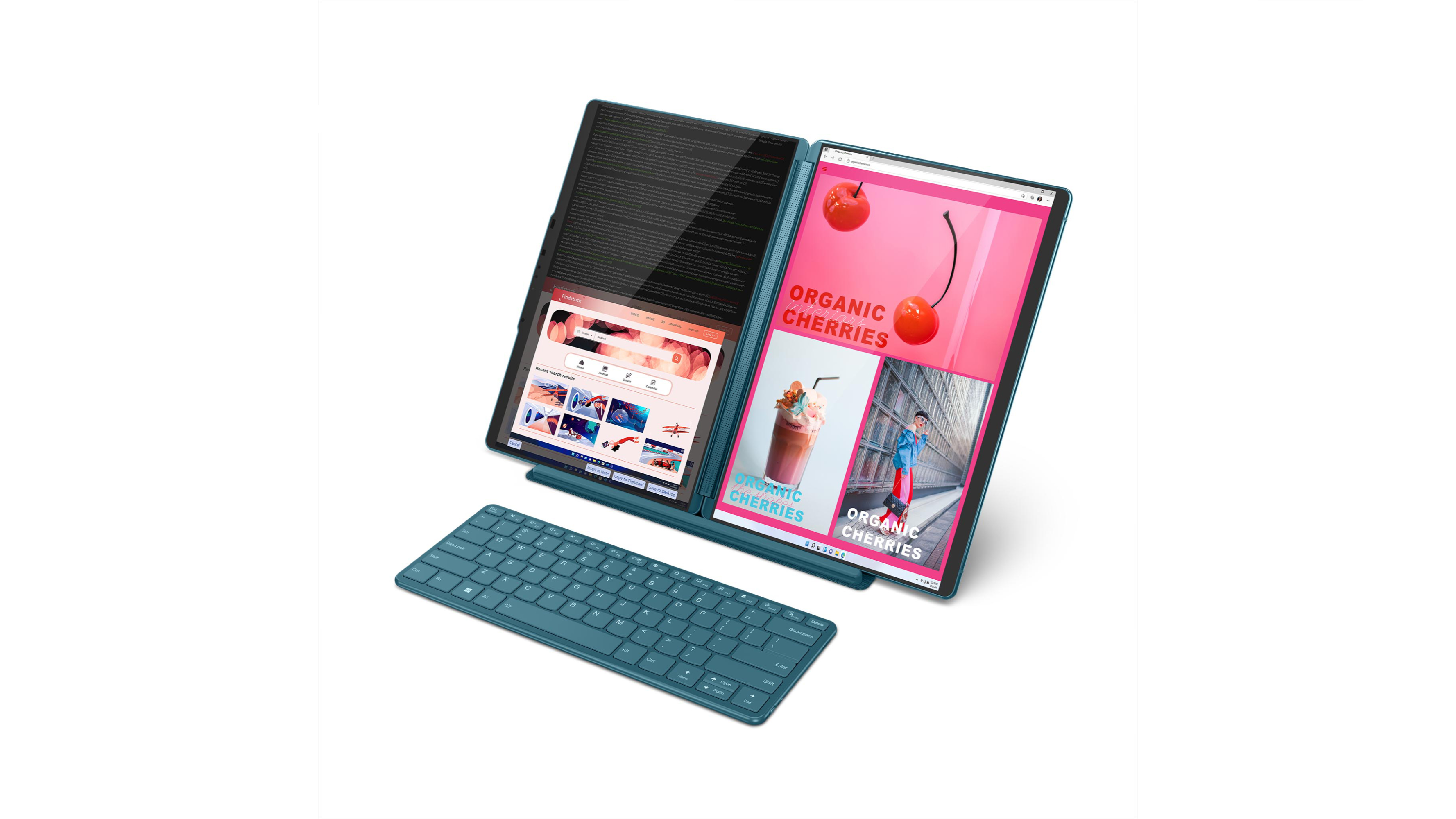
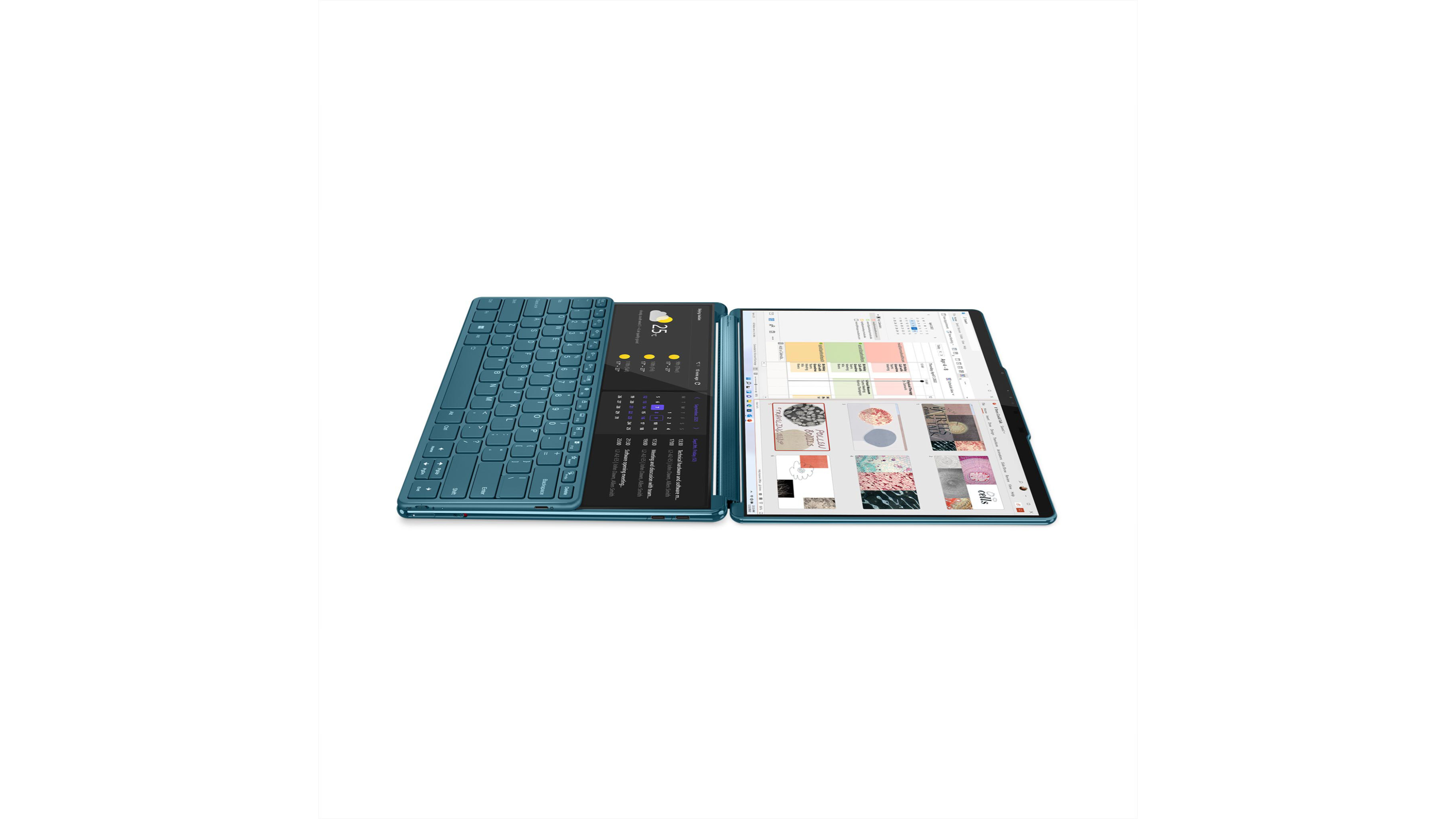
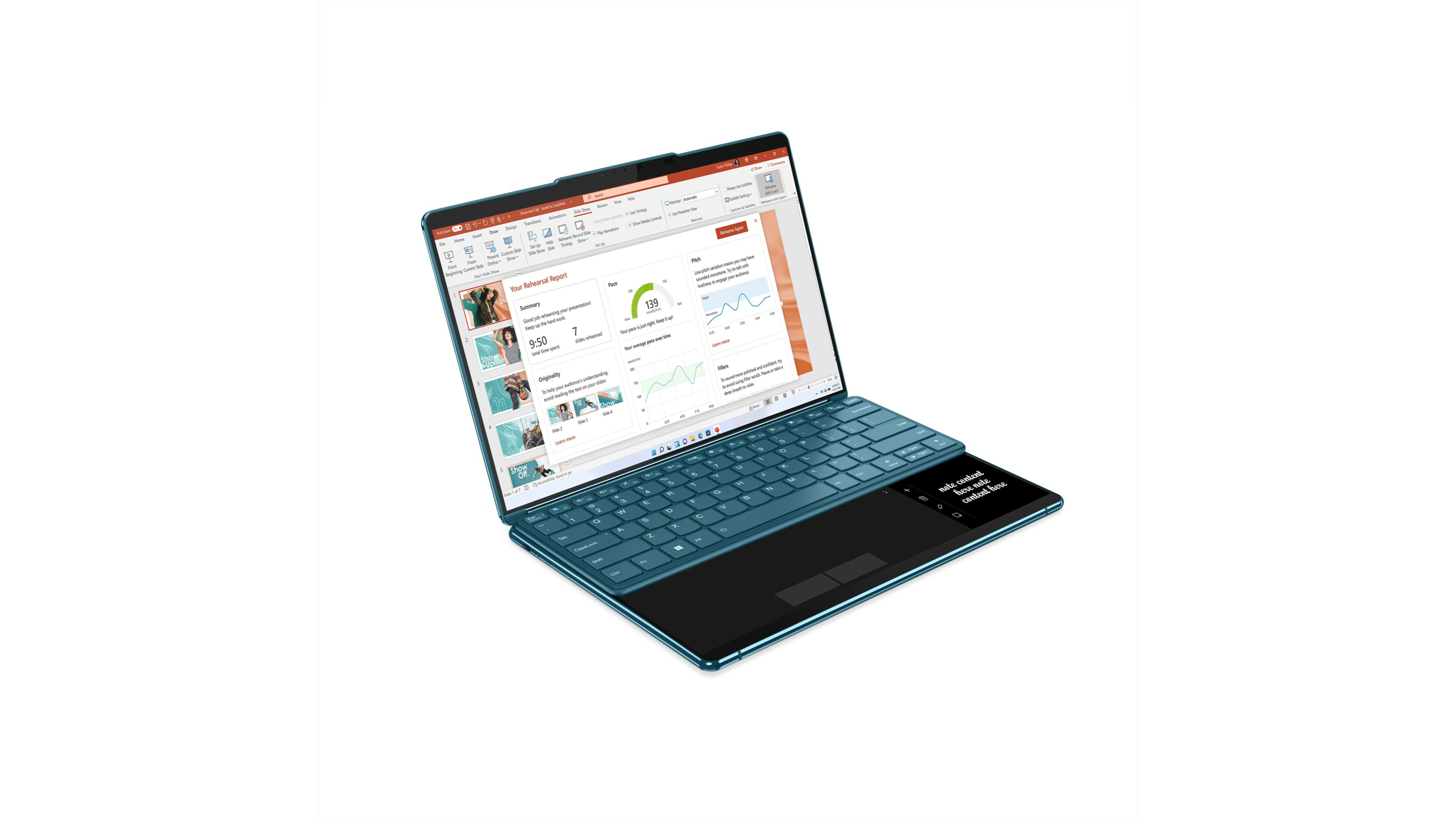
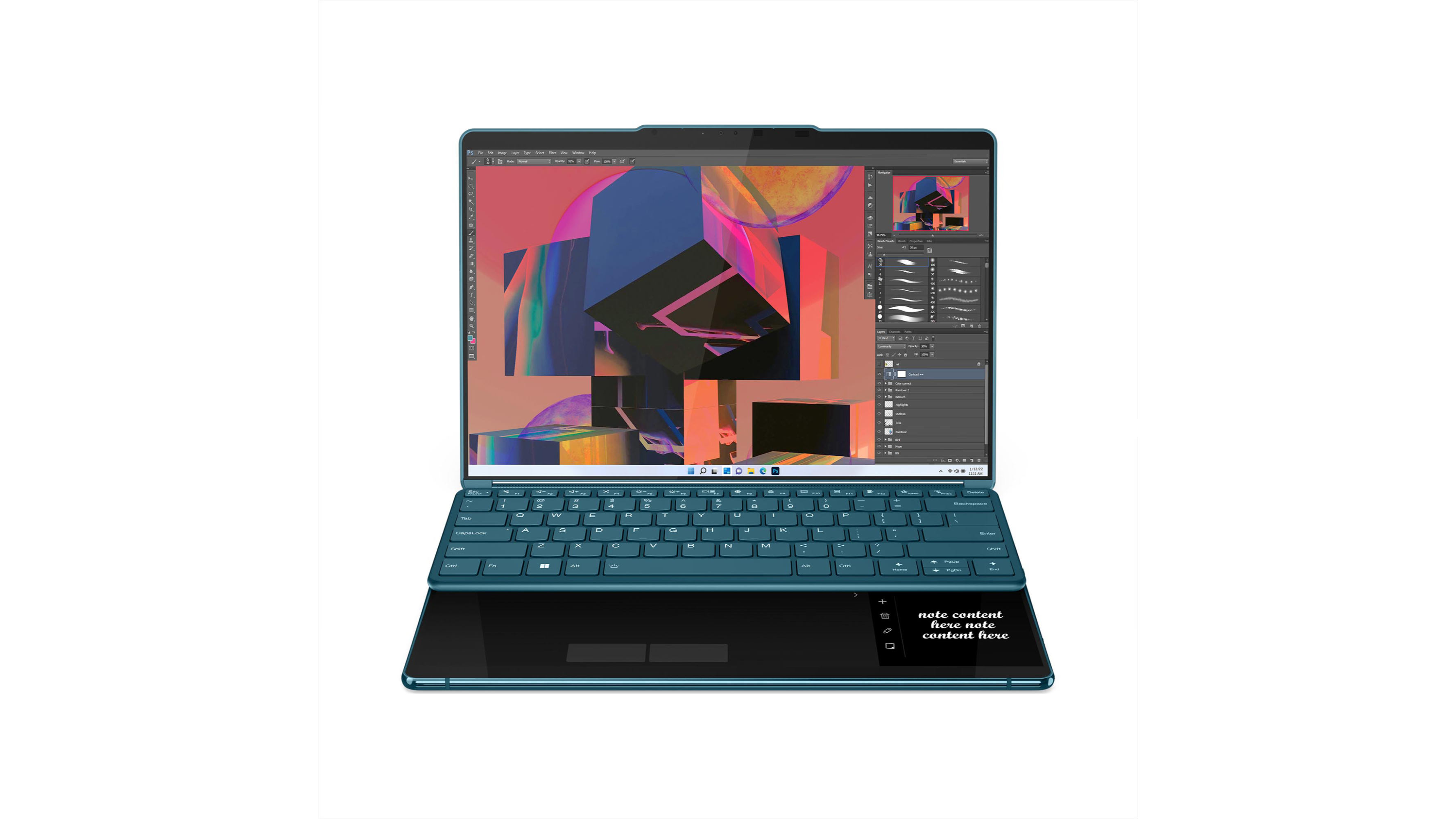
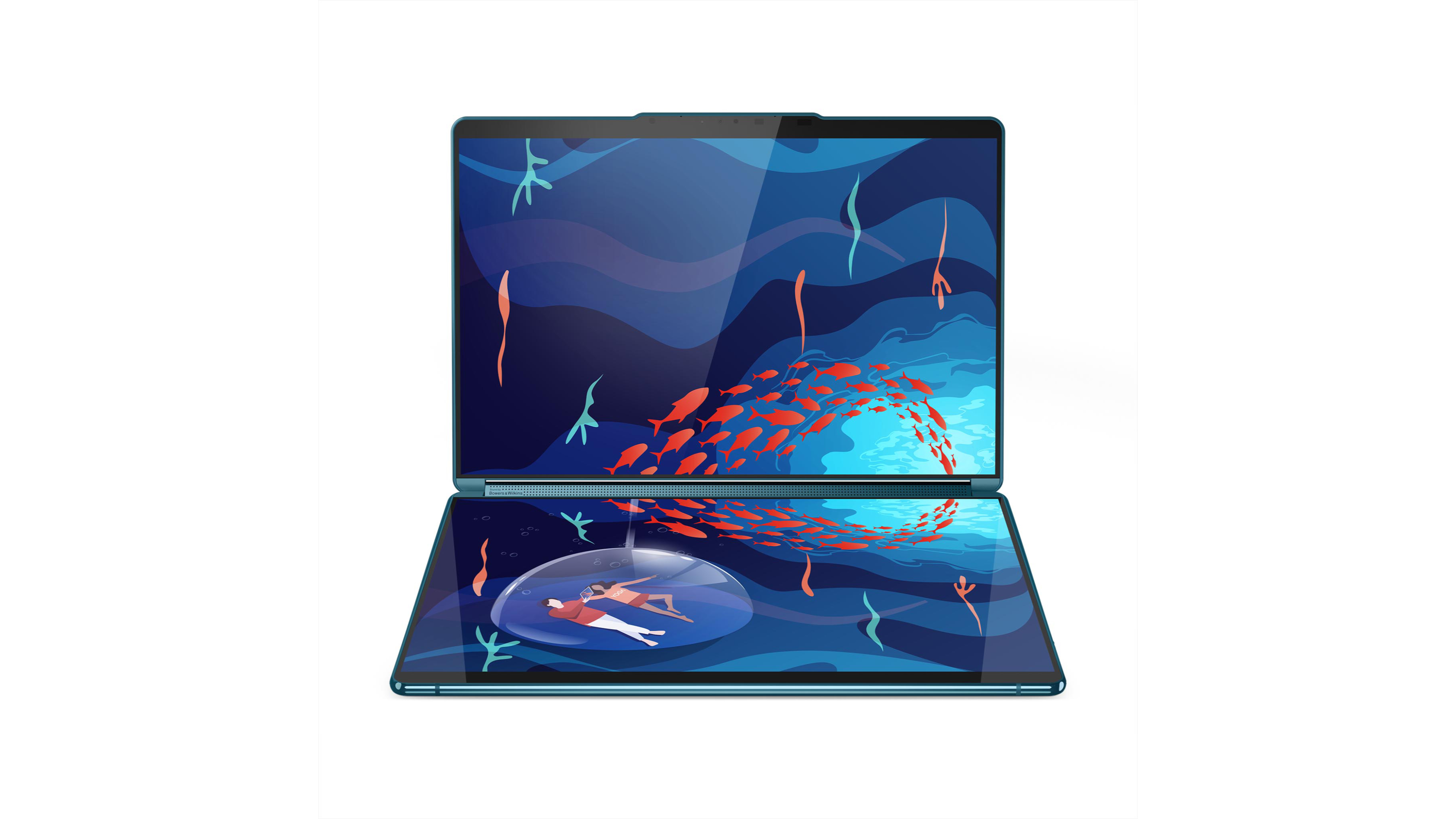
I also believe the larger size of the Yoga Book 9i's screens overcomes some of the limits felt on smaller dual-screen devices. While people may reasonably want to span a video across an entire Galaxy Z Fold 4, I think most would be happy with using one of the 2.8K OLED displays on the Yoga Book 9i to watch content. That's plenty of screen space to enjoy a video, all while providing an entire second display for other work or apps.
Our editor-in-chief Daniel Rubino went hands-on with the Lenovo Yoga Book 9i at CES 2023. He'll share his thoughts, including what it's like to handle the device in person, soon.

Sean Endicott is a tech journalist at Windows Central, specializing in Windows, Microsoft software, AI, and PCs. He's covered major launches, from Windows 10 and 11 to the rise of AI tools like ChatGPT. Sean's journey began with the Lumia 740, leading to strong ties with app developers. Outside writing, he coaches American football, utilizing Microsoft services to manage his team. He studied broadcast journalism at Nottingham Trent University and is active on X @SeanEndicott_ and Threads @sean_endicott_.
